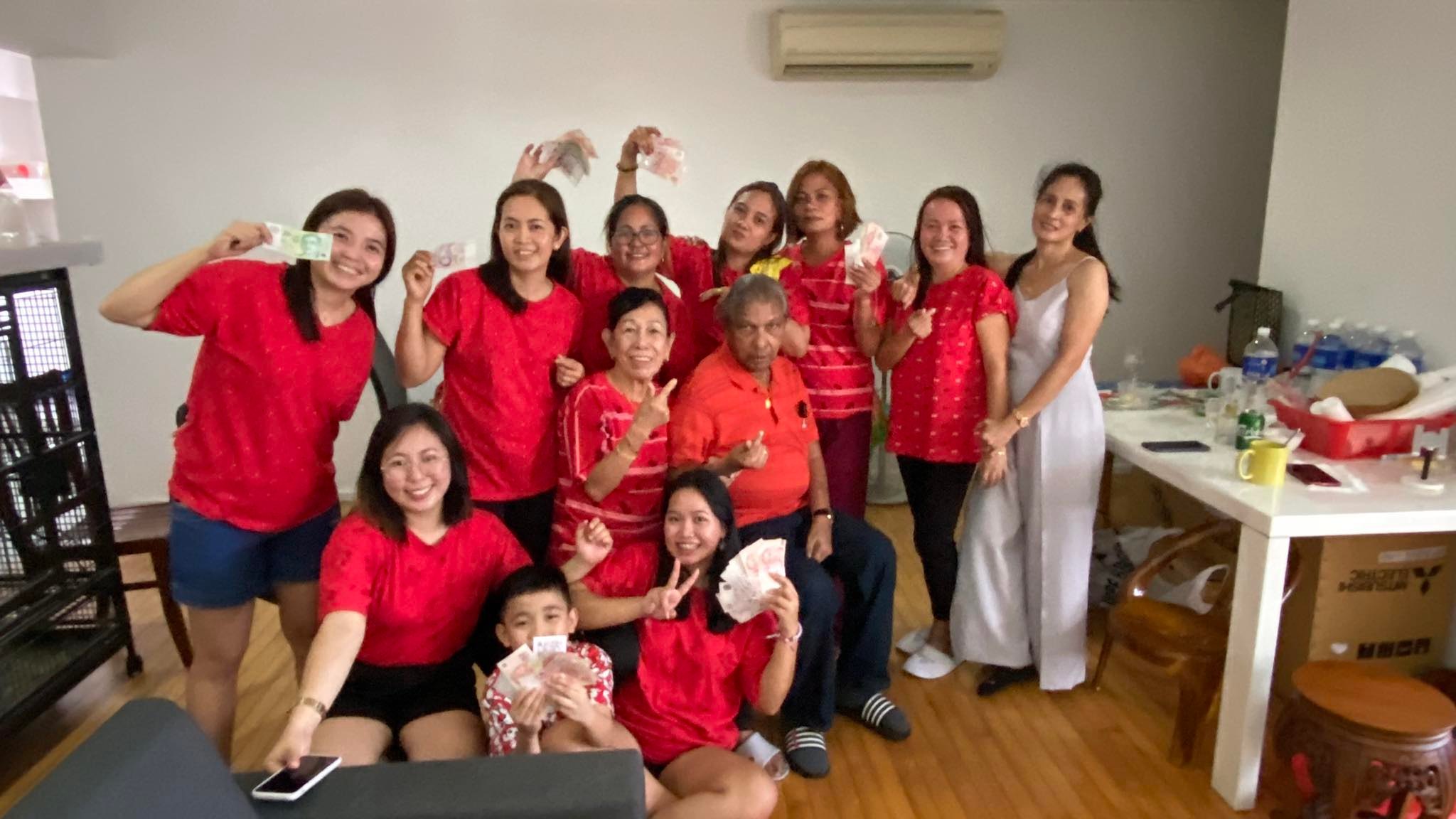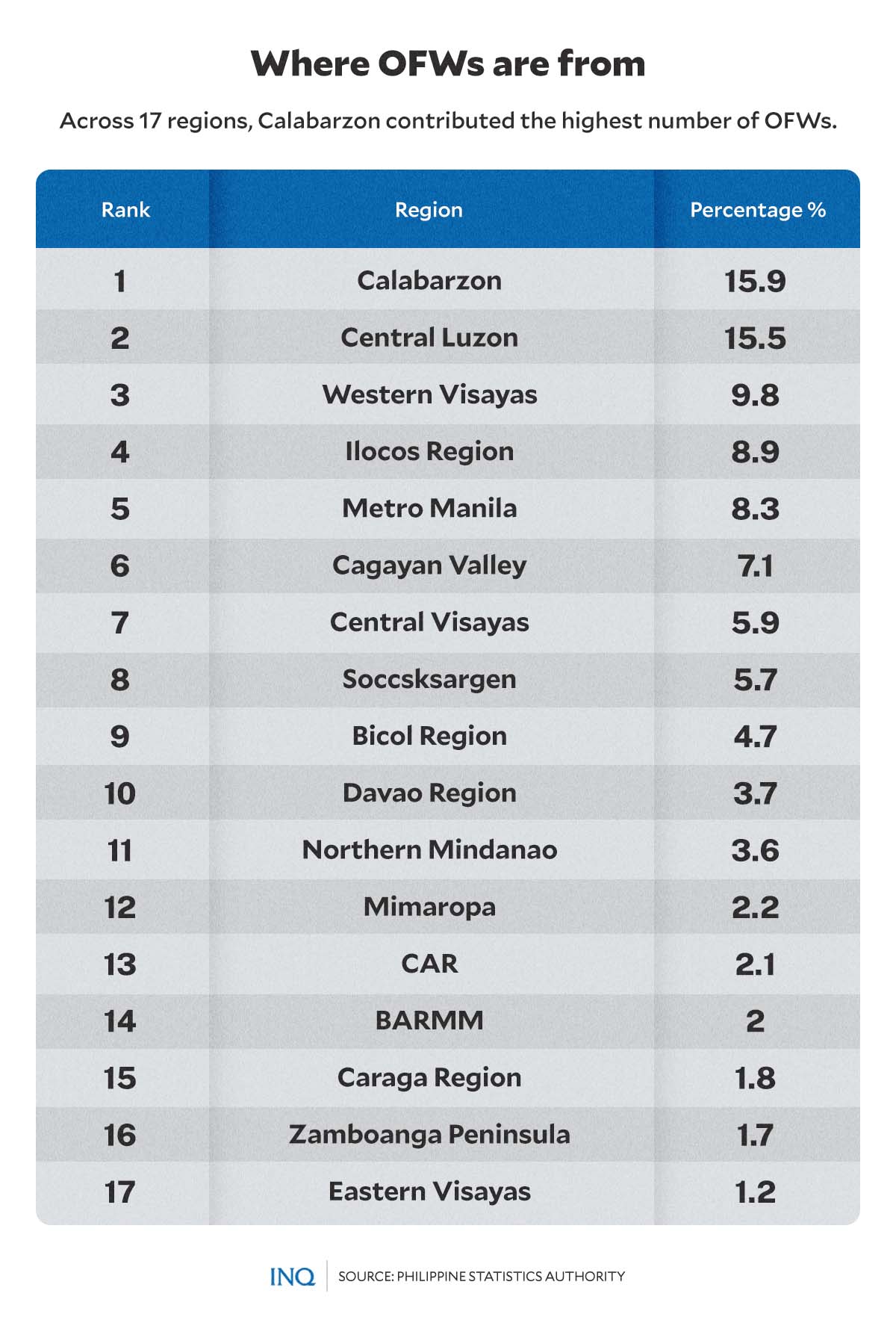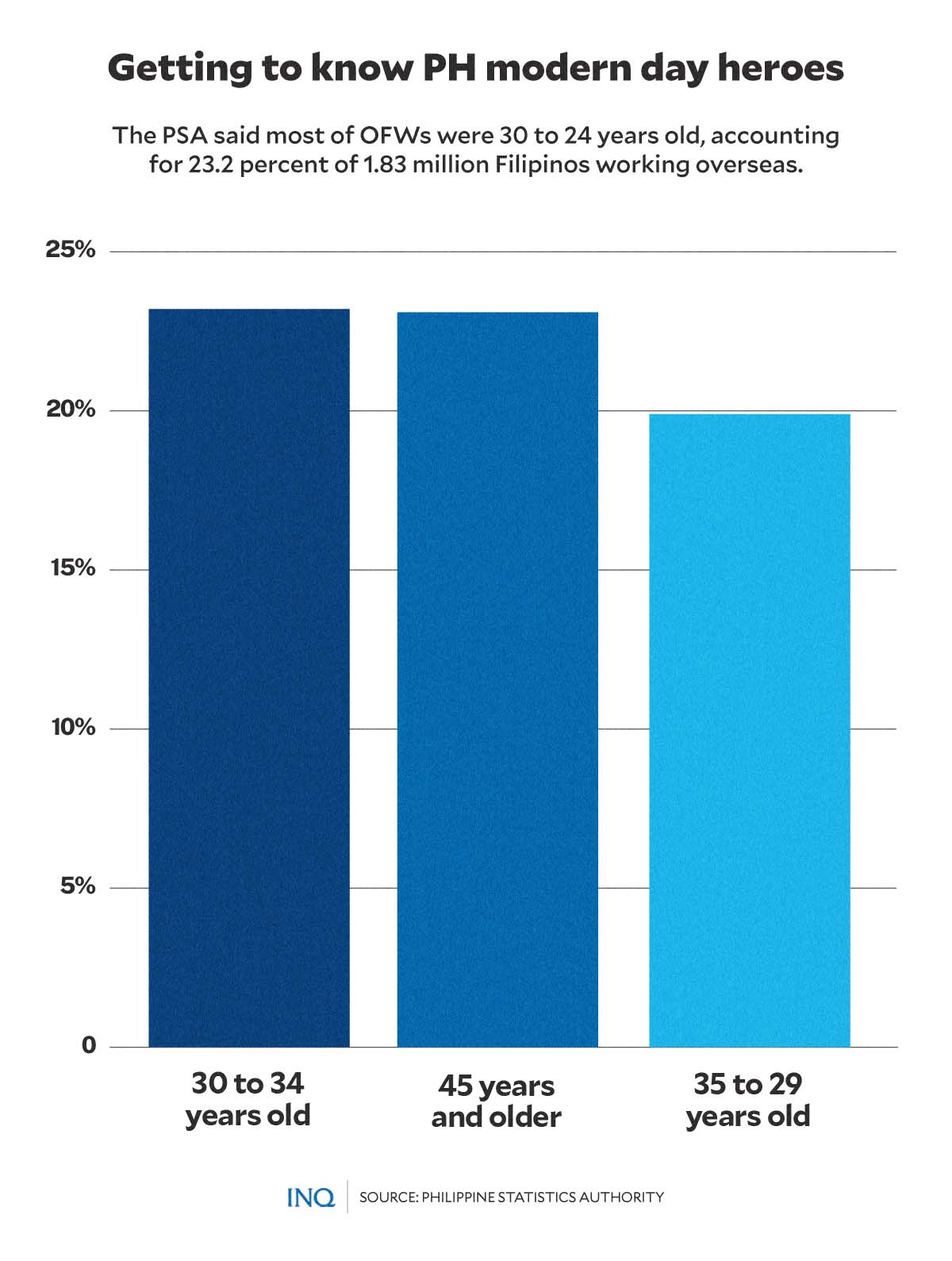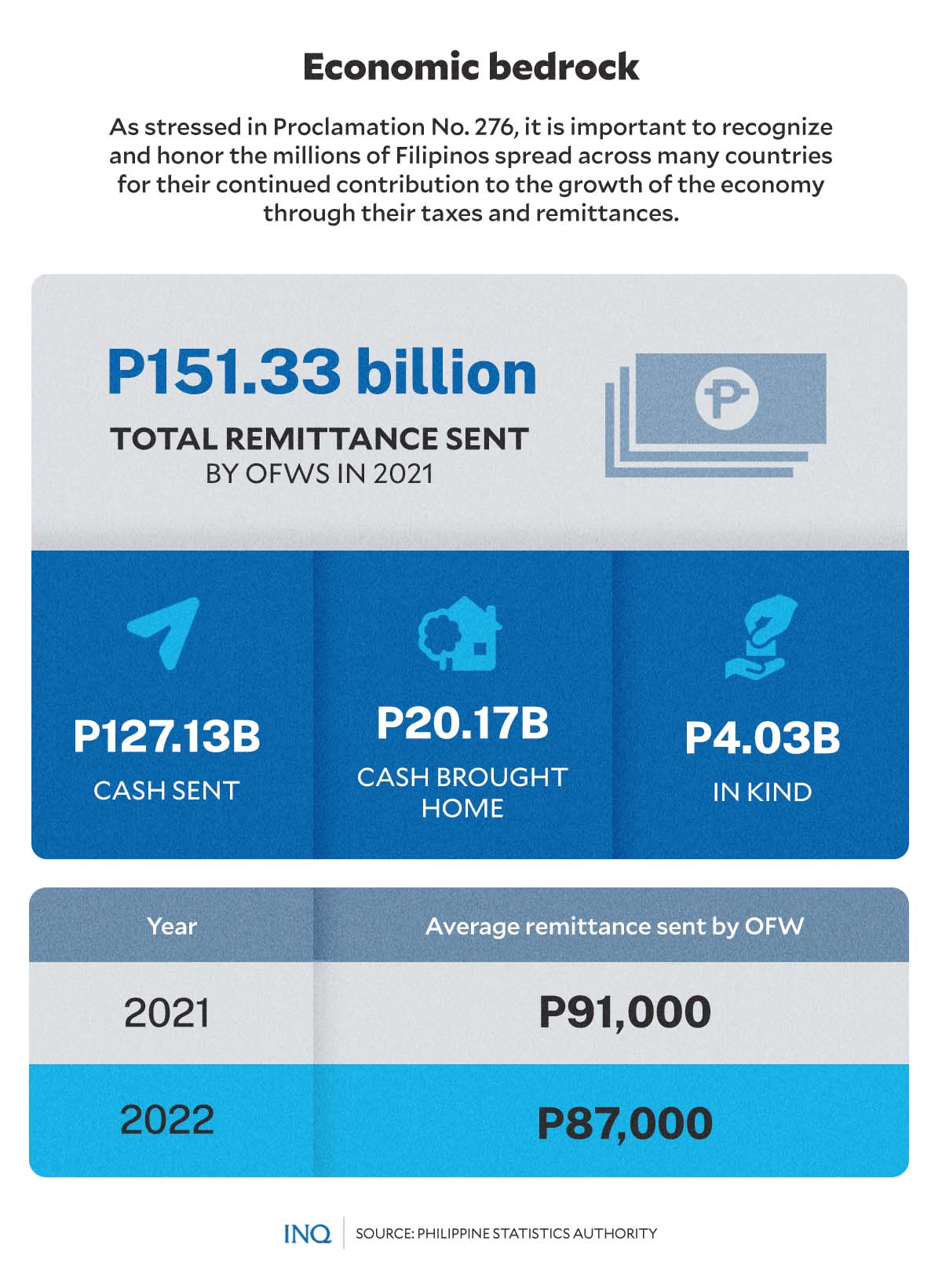Far from home for Christmas, New Year, OFWs find family in each other’s company
MANILA, Philippines—It’s been over five years since the last time Zeny Nolasco, a 47-year-old overseas Filipino worker (OFW) in Singapore, celebrated Christmas and New Year with her family In the Philippines.
“There’s no word to describe the sadness I feel, especially on the evening of Dec. 24 and 31, when me and my family should be together to celebrate Christmas and New Year,” she said.
She told INQUIRER.net that every year, she really looks forward to celebrating the season with her family, but there’s a tone of resignation in her voice: “I can’t do anything. I can’t leave for the Philippines since I need to work.”
Nolasco’s story is also that of Jane Amor Sebastian, who wished to be with her family in the Philippines for Christmas and New Year as they’re still grieving over the death of their mother last Dec. 1.
“I went home when my mother died and I really wanted to stay for the holiday season because I felt that it is us in the family that can console each other in this moment of sadness and sorrow,” she said.
Article continues after this advertisement
FAMILY FOR CHRISTMAS. OFWs in Singapore, including Zeny Nolasco and Vernalyn Natalio, celebrate Christmas together to ease the sadness of being far from home. PHOTO COURTESY OF ZENY NOLASCO
However, the 27-year-old OFW in Singapore told INQUIRER.net that she had no choice but to go back to work overseas since she has to earn money for her siblings and two children.
Article continues after this advertisementRELATED STORY: Number of returning OFWs for Christmas nearly back to pre-pandemic level
OFWs all over the world
According to the latest data from the Philippine Statistics Authority (PSA), there were 1.83 million OFWs last year, which consisted of 96.4 percent with existing work contracts and 3.6 percent without working visa or work permits.
The PSA, sharing the results of the Survey on Overseas Filipinos, said the number of OFWs increased by 3 percent from 1.77 million in 2020, but still below 2.2 million in 2019.
The 1.77 million OFWs in 2020 consisted of 1.71 million who had existing work contracts and 64,000 OFWs who did not have valid working visas and work permits but were employed and working full-time.
The PSA said more women were working overseas, accounting for 60.2 percent or 1.10 million in 2021. Male OFWs accounted for only 39.8 percent or 730,000.
RELATED STORY: Ex-OFW back home: A ‘traditional Filipino Christmas’ is unlike any other
By age group, the highest number of OFWs last year was in the age group 30 to 34 years old (23.2 percent). Next were those 45 years and older (23.1 percent) and 35 to 29 years old (19.9 percent).
Most OFWs were from Calabarzon (15.9 percent), Central Luzon (15.5 percent), Western Visayas (9.8 percent), Ilocos Region (8.9 percent), Metro Manila (8.3 percent), and Cagayan Valley (7.1 percent).
According to the PSA, the top five destinations of OFWs last year were Asia (78.3 percent), Europe (9.3 percent), North and South America (8.9 percent), Australia (2.2 percent) and Africa (1.3 percent).
Out of the 1.83 million OFWs in 2021, 24.4 percent worked in Saudi Arabia, while 14.4 percent were in the United Arab Emirates. Some 6.7 percent worked in Hong Kong, 5.9 percent in Kuwait, 5.8 percent in Singapore, and 4.8 percent in Qatar.
‘Consoling’
Away from home this Christmas and New Year, almost all OFWs share the sentiments of Nolasco and Sebastian—the “longing we feel is like piercing our hearts until it stops beating.”
“But it’s a good thing that we have OFW friends here that we can celebrate Christmas and New Year with,” said Nolasco, who spent her day off with fellow OFWs in Singapore last Dec. 25.
“Somehow, the sadness is eased—at least in a way—when I am with my fellow Filipinos,” she said, adding that she felt home when they celebrated Christmas together. “We were happy.”
Nolasco said last Tuesday (Dec. 27): “We will definitely see each other again on Jan. 1 to celebrate New Year as most of us will be having a day off that day—Sunday. It would somehow ease the sadness we will certainly feel.”
Vernalyn Natalio, a 51-year-old Filipino who is also working in Singapore, shared Nolasco’s words, saying that “if not because of my fellow OFWs here, I would have been crying all day.”
“Here, we have no one to consider as family except for our fellow Filipinos. I’m thankful that I have them with me here. It consoles me because I know there are people whom I can share my laughter and tears with.”
RELATED STORY: OFWs: PH heroes even in time of COVID pandemic
Dedicated to OFWs
Recognizing the sacrifices and contributions of OFWs to the Philippine economy, every December had been declared on June 21, 1988 by then President Corazon Aquino as Month of Overseas Filipinos.
Aquino’s Proclamation No. 276 said it was important to recognize and honor the millions of Filipinos spread across many countries for their continued contribution to the growth of the economy through their taxes and remittances.
According to data from the PSA, out of 1.83 million OFWs last year, 41 percent sent remittances between P40,000 to less than P100,000, while 20.5 percent sent at least P100,000.
The total remittance sent by OFWs in 2021 reached P151.33 billion. This included cash sent (P127.13 billion), cash brought home (P20.17 billion), and in kind (P4.03 billion), the PSA said.
Out of the P127.13 billion cash remittance of the OFWs sent to the country, P89.20 billion were from Asian countries. The average remittance sent by every OFWs in 2021 was P91,000, higher than the average remittance—P87,000—in 2020.
Back in 2007, then President Gloria Macapagal-Arroyo signed Administrative Order No. 202 creating the Inter-Agency Committee for the Celebration of the Month Overseas Filipinos with the group Philippine Migrants Rights Watch as head.
RELATED STORY: Jobs, income concerns persist as more OFWs return to PH for good




